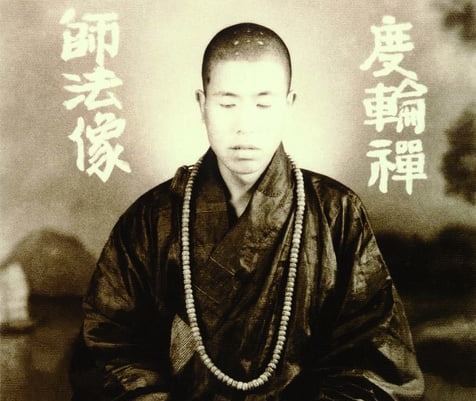
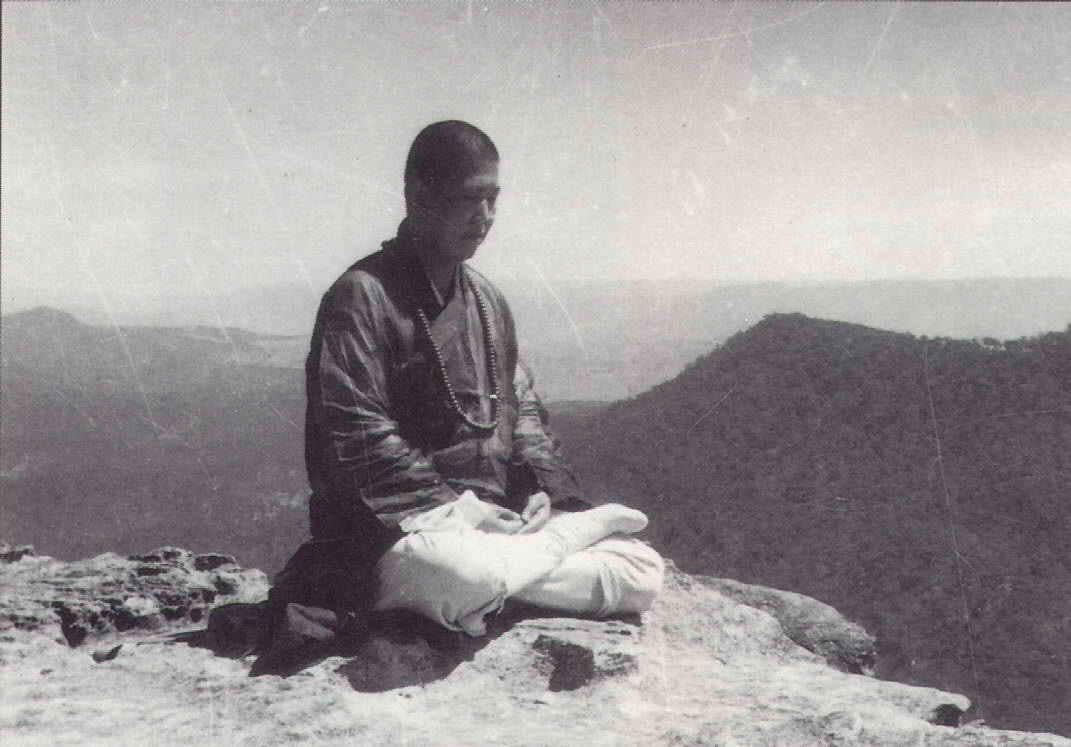
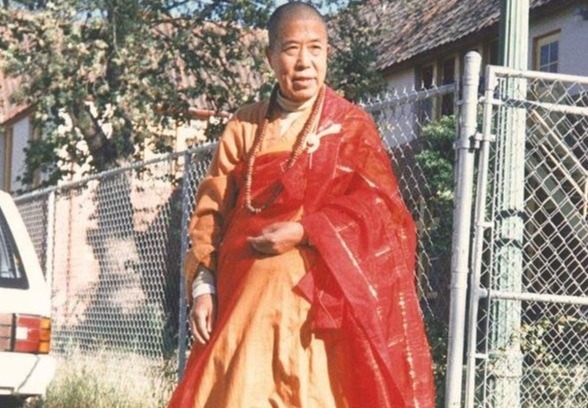
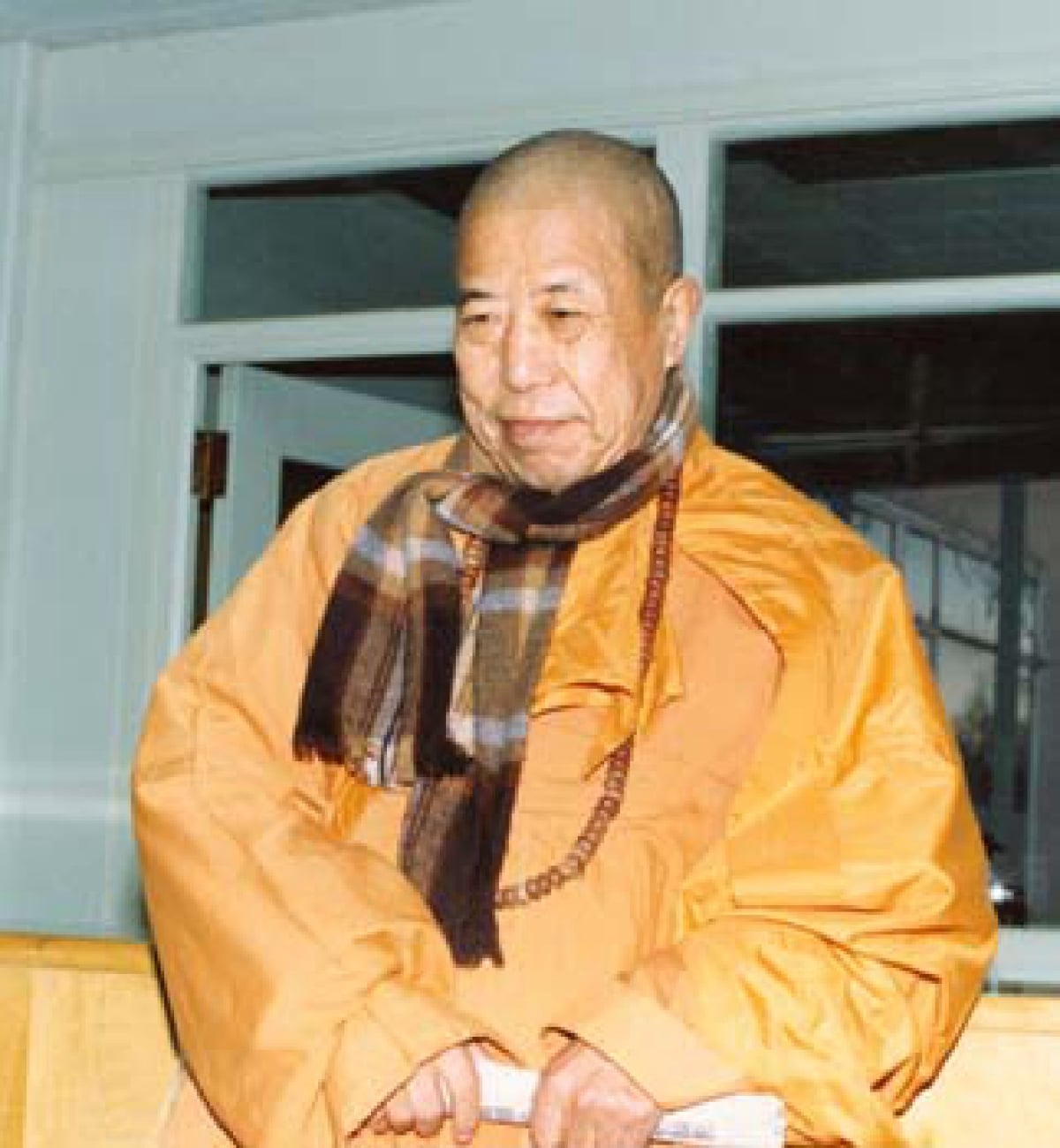

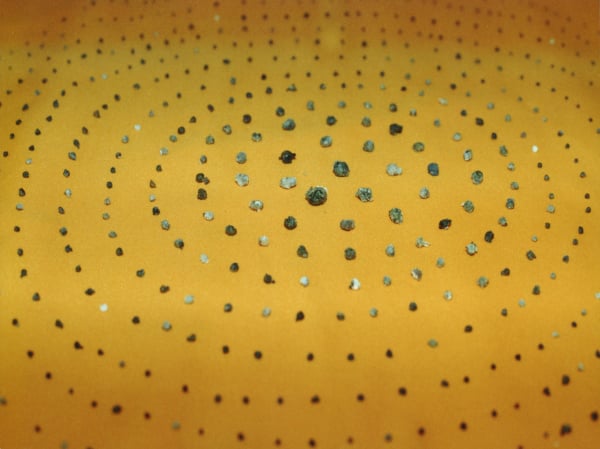

“I have had many names,” he once said, “and all of them are false.” In his youth in Manchuria, he was known as “the Filial Son Bai;” as a young monk he was An Ci (“Peace and Kindness”); later, in Hong Kong, he was Tu Lun (“Wheel of Rescue”); finally, in America, he was Xuan Hua, which might be translated as “one who proclaims the principles of transformation.” To his thousands of disciples across the world, he was always also “Shi Fu” — “Teacher.”
For ten years he devoted himself to study of the Buddhist scriptural tradition and to master the major schools of Mahayana Buddhism, including the Esoteric and Chan Schools. He also read and investigated the scriptures of Christianity, Taoism, and Islam. At the age of thirty, he went to the Fa Yu temple at Pu Tuo mountain and received the ordination of a Buddhist monk. By this time, he had already established through his own experience what he later called the “three great vows” of his ministry in America: the primacy and establishment of the monastic tradition; creating institutions of education; and the translation of the Buddhist sacred texts (Sutras) into English and other languages.
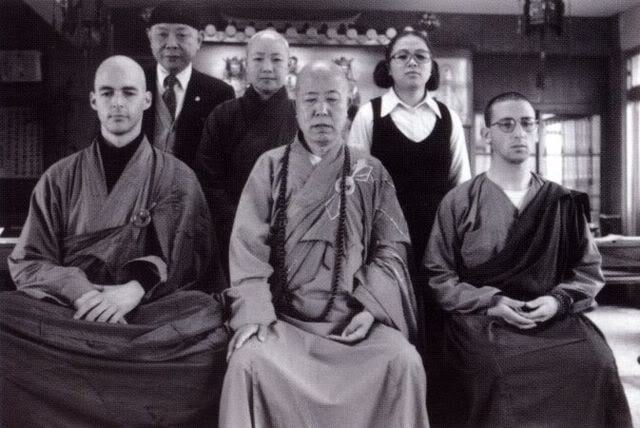
In 1948, Master Hua traveled south to meet the Venerable Xu Yun, who was already 109 years old then and China’s most distinguished spiritual teacher. Master Hua then left China for Hong Kong. He received the patriarchal transmission in the Wei Yang Lineage of the Chan School from the Venerable Xu Yun in 1956. He spent over ten years there, first in seclusion, then later as a teacher at three monasteries that he founded.
Finally, in 1962, several of his Hong Kong disciples invited him to come to San Francisco. By 1968, Master Hua had established the Buddhist Lecture Hall in a loft in San Francisco’s Chinatown, and there he began giving nightly lectures, in Chinese, to an audience of young Americans. His texts were the major scriptures of the Mahayana. In 1969, five of his early American disciples took full ordination, thereby initiating the Master’s wish to establish an indigenous sangha in the West. Since then, hundreds of monks and nuns have trained, studied, and ordained under his guidance.
In 1984, Master Hua founded the Dharma Realm Buddhist Association (DRBA), which serves as the umbrella organization for the monasteries, schools, temples, and all of the activities conducted as part of his legacy.
As an educator, Master Hua was tireless. From 1968 to the mid 1980’s he gave many lectures every week, and he traveled extensively on speaking tours. He continued to travel and lecture until late in life. He also established the Sangha and Laity Training Program (SLTP), Instilling Goodness Elementary School, Developing Virtue Secondary School, and Dharma Realm Buddhist University (DRBU) at the City of Ten Thousand Buddhas (CTTB), and the Institute for World Religions, in Berkeley.
Master Hua manifested “stillness” on June 7, 1995.
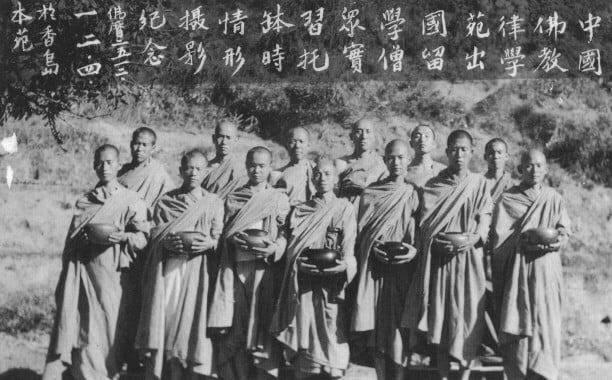
上人,名安慈,字度輪,東北吉林雙城縣人,俗姓白。宣化乃上人受命為溈仰宗第九代嗣法傳人時,由虛雲老和尚特賜之法號。上人十一歲時,見死人而頓悟無常,決志修道。遍覽釋、道、儒三教經典,參加「道德會」,為人群服務。上人侍父母至孝,鄉里稱為白孝子。
十九歲遭母喪,禮請三緣寺常智老和尚為剃度,結茅廬於塚旁,廬墓守孝,日夕參禪習定,曾一坐而未進食者二十餘天。發十八大願,度盡三界六道眾生,方成正覺。德行感召,邪魔而怖畏。誠可格天,患病者每有所求,即獲感應,不藥而癒。
一九四六年二次世界大戰結束後,國內交通復原,上人乃南下往廣東省南華寺,拜訪久仰之大德虛雲老和尚,並路經普陀山受具足戒。虛老一見,知為法器,即委為南華寺戒律學院主任。一九四九年上人赴香港,旋創辦西樂園寺、慈興禪寺及佛教講堂。
上人素抱弘揚佛法於全球之志。一九六一年往澳洲,越年赴美,於三藩市成立金山聖寺。時值古巴戰禍燃眉,上人乃絕食五星期,以求世界和平。一九六八年美國青年大學生數十人,欲尋求人生正確目標,慕名而至。上人為說《楞嚴經》,並舉辦禪七。翌年,出家者有男女五人,為美國有比丘、比丘尼出家之始。自此而後,相繼出家者日增,由是人才輩出,遂於一九七三年成立國際佛經翻譯院,大量翻譯大乘經典為英文,如《大方廣佛華嚴經淺釋》、《妙法蓮華經淺釋》、《大佛頂首楞嚴經淺釋》等。
一九七六年,因緣巧合,上人購得離三藩市一百一十里,佔地四百八十畝之政府物業,做為世界佛教中心之十方道場,名為萬佛聖城,附屬於法界佛教總會。城內設法界佛教大學、培德中學及育良小學。萬佛聖城除專注於戒律與修行外,並積極弘揚佛法。
上人訓諭:「不論聽眾多寡,日日講經說法。」 城內眾人必須遵守之六大宗旨為:不爭、不貪、不求、不自私、不自利、不妄語。法界佛教總會於美國各地現有之分會為:瑜伽市之萬佛聖城、加州三藩市之金山聖寺、洛杉磯之金輪聖寺、加拿大溫哥對金佛聖寺、加拿大加爾各里之對嚴聖寺及國際譯經學院。
上人為法忘軀,不辭勞累,數度應邀往東南亞弘法。一九八八年受聘主持中華民國於臺灣舉行之護國息災觀音法會。一九九○年受英國蘇美度法師之請,往英國、波蘭、法國等地弘法。上人所至之處,信眾蜂湧。
上人主張佛教徒團結一致,極力打破各宗各派及大、小乘之成見,融合南北傳,因此數度於萬佛聖城由大、小乘法師聯合主持,傳授三壇大戒。上人不自私、不自利之為教精神,於茲可見。敬錄上人訓示對聯,與吾儕共勉:「凍死不攀緣,餓死不化緣,窮死不求緣,隨緣不變,不變隨緣,抱定我們三大宗旨。捨命為佛事,造命為本事,正命為僧事,即事明理,明理即事,推行祖師一脈心傳。」
一九九五年六月七日,上人圓寂於美國洛杉磯,慧日遽殞,世人同悲;高僧示寂,風範猶存。上人一生大公無私,他慈悲智慧的教化,已令無數人改過自新,走向清淨高尚的菩提大道。
HTML Creator